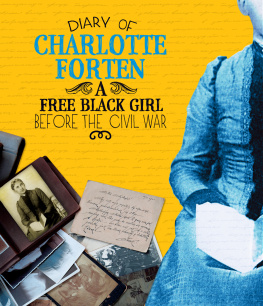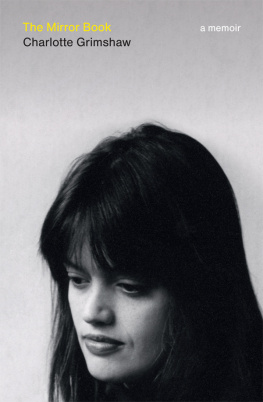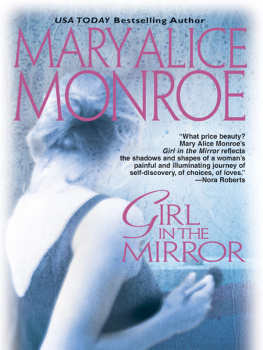For their tireless support in bringing Charlotte von Mahlsdorf all the way from East Berlin to the Broadway stage:
Robert Redford, Ken Brecher, Philip Himberg, Robert Blacker and the Sundance Theater Institute, Eric Rosen, Heather Schmucker and the About Face Theater Company in Chicago, Jim Nicola and the New York Theatre Workshop, Des McAnuff, Shirley Fishman, Carrie Ryan and the La Jolla Playhouse, Paul Lister and Dreamworks SKG, The Tectonic Theater Project, Blanka Zizka, Jiri Zizka and the Wilma Theater in Philadelphia, Tim Sanford, William Russo, Sonya Sobieski and Playwrights Horizons in New York, Carol Rigolot and the Council of the Humanities at Princeton University, the German Department of Vassar College, The MacDowell Colony, Yaddo, the staff of Prinz Eisenherz Buchladen, Drew Hodges and Spotco, Taylor-Wessig in Berlin, David Richenthal, Sarah Jane Leigh, Doug MacLaren, David Colden, Steve Simons, Marcus McGregor, Steven Roose, David Schmerler, Kent Eiler, Eva Longscharitsch, Joyce Ketay, Jason Baruch, Richard Kornberg, Sam Cohn, Denise Oswald, Debra Immergut, Christopher Ashley, Andreas Meier, Michael Borowski, Kenny Mellman, Justin Bond, David Hines, Lauren Landau, Mary Hines, Philip Sherwell, Matthew Shiner, James Marion, Allison Rutledge-Parisi, Michael Cadden, Drake Baer, Susan Kittenplan, David McDowell, Tom Cole, Olga and Chris Hartwell, Emery Snyder, Kim Benzel, Cynthia Walk,Christopher Murray, Hans Homann, Alan Schrier, Dominic Balletta, Paul Eric Pape, Susan Lyons, Jeff LaHoste, David Clement, Peggy Wreen, Synthia Rogers, Linda Raya, Anne Poyner, Miss Lillian, the entire Wright family, and one used 86 Honda Civic named Madge that was once valued at almost twenty-five hundred bucks.
(The French doors at the rear of the room open, and standing before us is CHARLOTTE VON MAHLSDORF.
She is, in fact, a man, roughly sixty-five years old. CHARLOTTE wears a simple black housedress with peasant stitching, a kerchief on her head, and an elegant strand of pearls.
She gazes at the audience for a moment; the tiniest flicker of a smile dances on her lips. Then, surprisingly, she closes the doors as quickly as she appeared, and is gone.
A pause. The stage is empty again.
In a moment, the doors reopen. CHARLOTTE reappears. Cradled in her arms is a huge antique Edison phonograph, complete with an enormous horn in the shape of a flower. She grins, satisfied, and sets the phonograph on a small plinth.
She steps back for a moment to admire the music machine. When she speaks, its in broken English, but thecadences of her voice are delicate; theres a musical lilt to her inflection. She has a German accent.)
CHARLOTTE: Thomas Alva Edison was the inventor of the first talking machine of the world, in July of 1877. And, you see, the record is not ein Plattenspieler; nein . It is a cylinder made of wax. And this record is working with a hundred and sixty revolutions per minute, and is playing four minutes long. And the record is made by the National Phonograph Company in Orange, New Jersey. At one time, I had over fnfzehntausend cylinders.
( CHARLOTTE indicates a painting of the Edison phonograph with an attendant dog, its ears cocked to listen.)
And you see on the wall a painting: the dog Nipper, His Masters Voice. The most famous trademark in all the world. Next month, this phonograph will be half a century old.
(She begins to turn the handle on the phonograph, readying it for play.)
For fifty years, Ive been turning its crank.
The loudness depends on a big or a small horn. Metal horns are better for bands and the voices of men. And thewooden horns, they are better for the strings and the voices of the female. Die Sopranistin. And Edisons phonograph has in the needle a little sapphire.
(She plucks a tiny disposable needle from a drawer concealed in the phonograph. She holds it up to the light, and says emphatically):
Nicht Diamant, nur Saphir. And when it grazes the record it sounds so nice.
( She installs the needle on the arm, then delicately places the arm on the wax cylinder. The machine begins to playan old German waltz, scratchy and exquisite.)
In the Second World War, when the airplanes flew over Mahlsdorf, and the bombs were coming down, I played British and American records. And I thought, They can hear in the airplanes that I am playing Edison records. I thought, If they hear me they will know Im their friend.
( A pause as CHARLOTTE revels in the music.
Thenabruptlythe music stops . CHARLOTTE is supplanted by someone else, a thirty-something newsman named JOHN MARKS.
JOHN has the intrepid spirit of a Saturday serial matinee hero. His voice has a Texas twang. His masculine edge stands in sharp contrast to CHARLOTTE s demure nature.)
JOHN:
From the desk of John Marks
Bureau Chief, Berlin
U.S. News & World Report
September, 1990.
Dear Doug,
Its a funhouse over here. You cant imagine. The Berlin Wall falls and the world flips upside down.
All the great and powerful leaders are turning out to be clowns. Erich Honecker, one of the most feared and respected dictators in the world, has in one year become a fugitive. He wanders around the grounds of a Soviet military hospital in his pajamas. Secret police files kept on East Germans for four decades are being released, and it turns out husbands spied on their wives, children on their parents, dissidents on each other.
(He steps forward, and adopts a more confidential tone.)
Now, in the midst of all this craziness, Ive found a true character; shes way up your alley. (And, believe me, I use theterm she loosely.) Id love to interview hermake her my first official article for U.S. News & World Report. But Im afraid my editor will say her storys too extreme. Still, I think she may well be the most singular, eccentric individual the Cold War ever birthed.
Have I piqued your interest?
Love,
John
(Another abrupt shift. DOUG is a playwright, in his mid-thirties, with an eager-to-please manner and a somewhat mellifluous voice.)
DOUG: Piqued indeed.
August 8, 1992. Ive been in Berlin for two days now. Im sleeping on Johns floor. Today we went to the Reichstag. There were demonstrations, because Cristo wants to cover it in pink tulle. Now were in Johns car, headed toward the east.
( DOUG glances out an invisible window, as though he were riding in a car with JOHN. )
Through the windshield, I can see fragments of the infamous wall still standing. Slapped onto one in bold paint are the words Art Survives.
A sign whizzes past: Mahlsdorf. Its a grim place; vastapartment complexes rise like cement gulags. Then we turn a corner, and its like weve turned back the clock two hundred years or more. Standing before us is a huge, weather-beaten mansion made entirely of stone. About a hundred tourists are gathered at the front door. Suddenly, with a creak, it opens.
( DOUG morphs into CHARLOTTE. She fingers her pearls. Music from an Edison Amberol wafts through the air.)
CHARLOTTE: Wilkommen in meinem Grnderzeit-Museum. Welcome to my Grnderzeit Museum.










